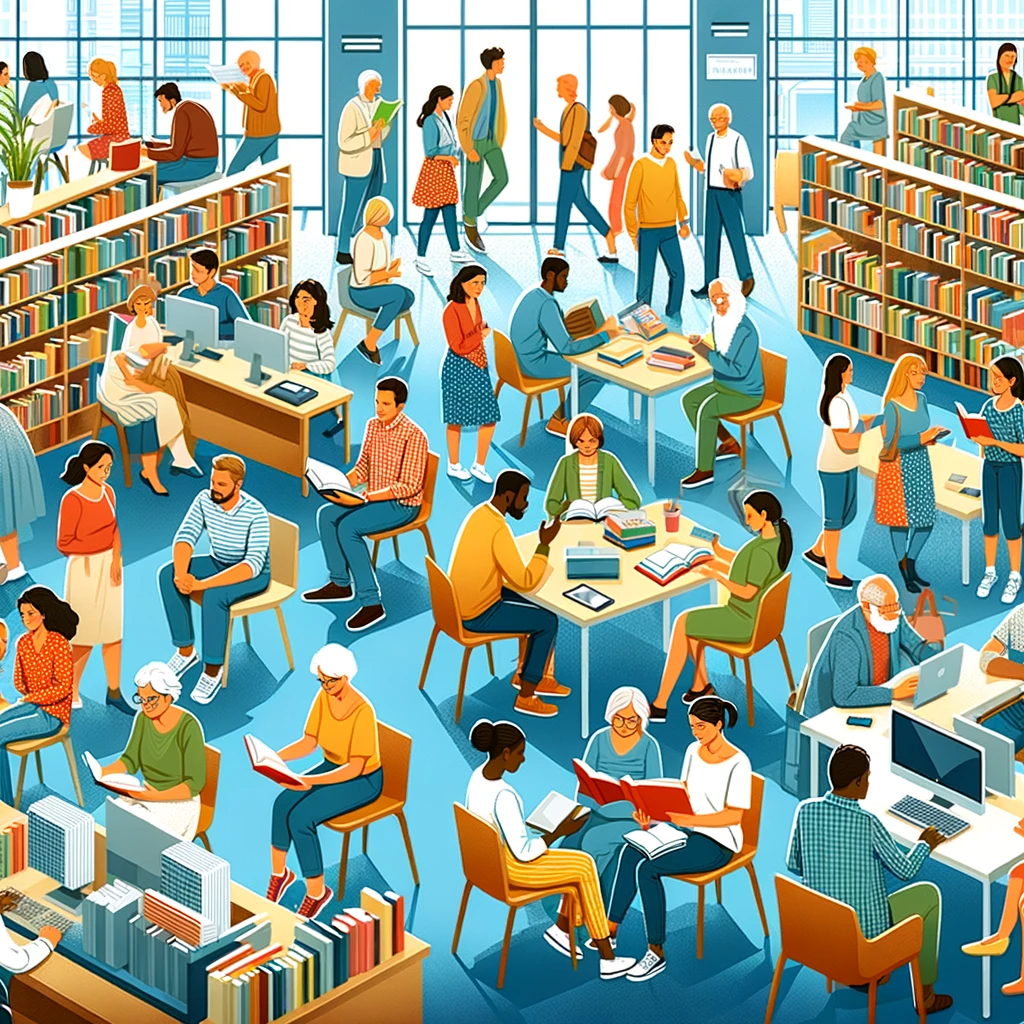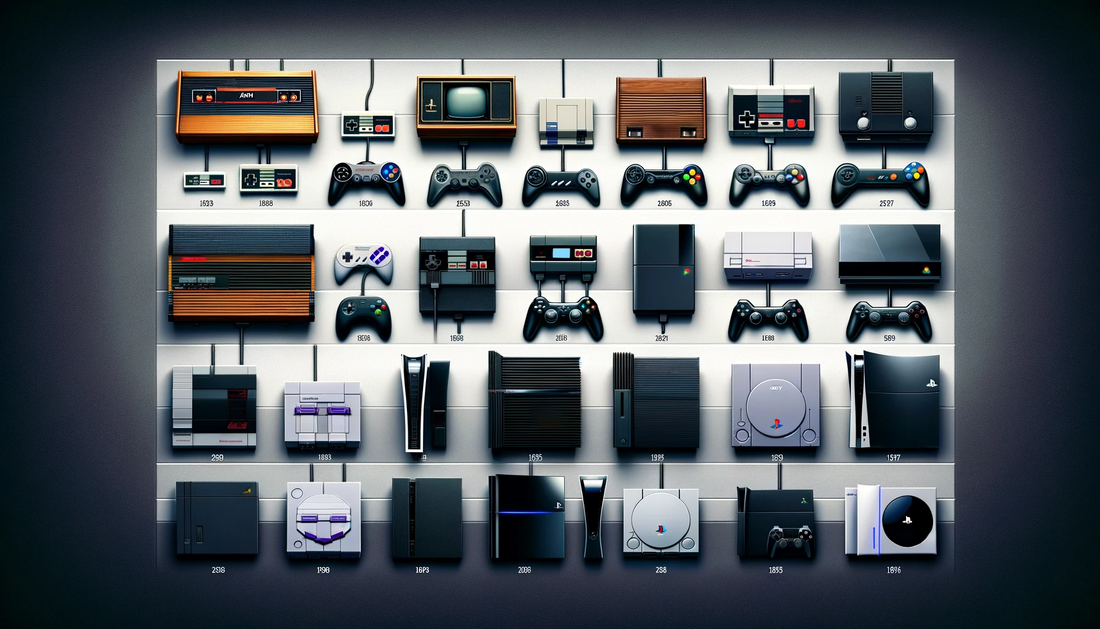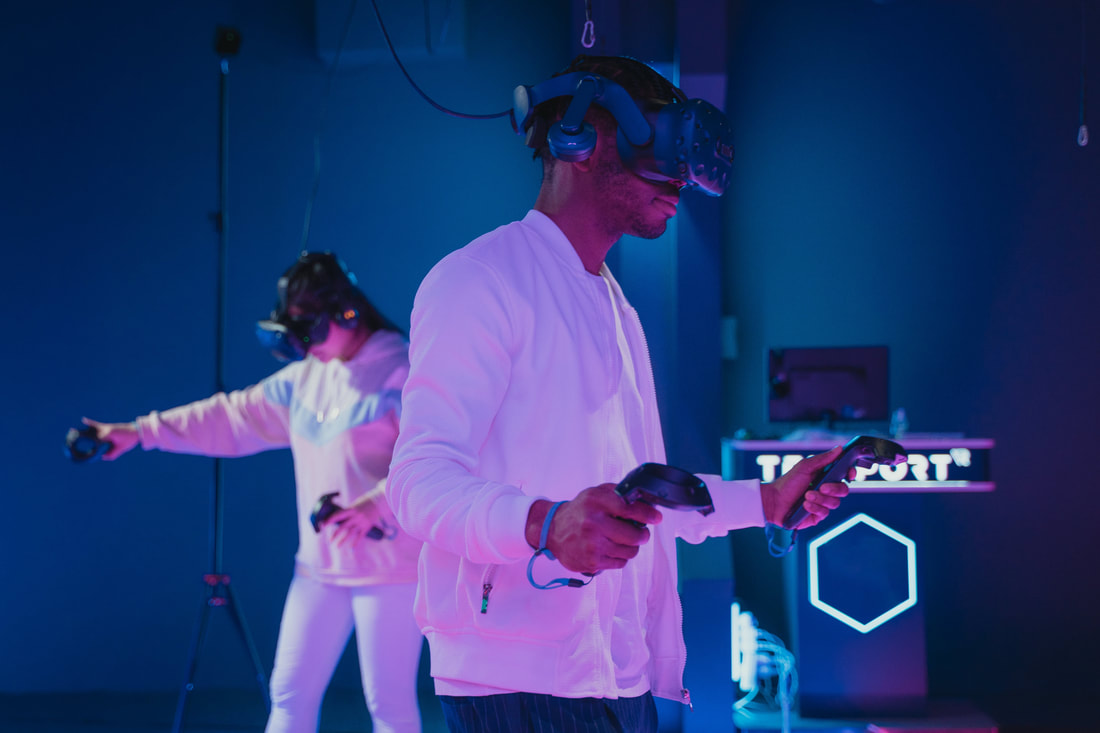|
In the dynamic realm of library services, understanding the community you serve is paramount. This blog post is inspired by and expanded from a brief presentation I made on the crucial steps for learning about the community a branch library serves and how this knowledge profoundly influences service delivery. Grasping this aspect of one’s role as a librarian is a crucial step toward offering effective services. This piece aims to assist you through this essential process, enabling you to significantly impact and contribute to your community's well-being. Six Key Steps to Understanding Your Library's Community1. Community Analysis and Research
2. Engagement with Community Members
Photo by Kampus Production from Pexels. 3. Collaboration with Local Organizations
Effective Networking Tips
4. Library Usage Analysis
5. Staff Involvement and Training
6. Regular Review and Adaptation
Generated with DALL·E. Impact of Understanding the Community on Service DeliveryUnderstanding your community shapes every aspect of library service delivery:
For librarians, engaging with the community is a continuous journey that profoundly affects your library's capacity to fulfill its mission and serve its patrons. This process of perpetual learning and adaptation ensures your library's relevance and impact within the community. A library in tune with its community is more than just a resource centre; it's a vibrant hub of shared knowledge, culture, and connection—a place that truly makes a difference. The presentation that inspired the post.
0 Comments
Hello, fellow librarians and information enthusiasts! Today, I'm thrilled to delve into the nuanced and often daunting task of selecting and transitioning to a new Integrated Library System (ILS). The choice of an ILS is more than just a technical decision; it's a vital component that impacts the daily operations for both staff and patrons. An ILS is mission-critical and its functionality is as crucial as any other essential service in a library. When handled correctly, transitioning to a new ILS presents a tremendous opportunity for growth and improvement, transforming a high-impact event into a stepping stone to enhanced library services. Generated with DALL·E. Considerations for a Future-Ready ILSIn the dynamic landscape of library services, selecting an ILS that aligns with your library's long-term vision is essential. A future-ready ILS is not just about managing current needs but also being adaptable to emerging technologies and evolving patron demands. Let’s explore some key factors to consider: System IntegrationThe ability of an ILS to integrate with other systems significantly enhances its utility. A prime example is the partnership between TLC (The Library Corporation) and MessageBee. This collaboration has brought enhanced messaging integration to Library Solution customers. MessageBee offers advanced messaging capabilities, such as customizable notifications and detailed message analytics. Such integrations show how the choice of an ILS can significantly impact the choice, availability, and functionality of other applications and services in the library. Data ManagementEffective data management is at the heart of any good ILS. This includes not only efficient organization and retrieval of data but also robust backup solutions and data integrity measures. Mobile AccessibilityWith the widespread prevalence of smartphones and tablets, an ILS with strong mobile accessibility is crucial. This feature ensures that both staff and patrons can access the library's catalog and resources conveniently from their mobile devices. However, be aware that some companies might charge extra for a mobile app or premium mobile experience, so it’s important to factor this into your decision-making process. User SupportFinally, the level of user support provided by the ILS vendor is a critical factor. This includes training for library staff, customer service for technical issues, and regular updates to the system. Generated with DALL·E. Standard and Open Data FormatsA critical aspect in choosing an ILS is its compatibility with standard and open data formats. These formats ensure smooth data migration and interoperability. Standard data formats are established protocols for encoding data, developed and endorsed by recognized standards organizations. These formats ensure consistency and compatibility across different systems and platforms. In library systems, standard data formats facilitate the sharing and exchange of information. A notable example is MARC (Machine-Readable Cataloging), a standard for bibliographic data representation. Another example is Dublin Core, a set of vocabulary terms used to describe various resources, such as web pages, books, and images. Open data formats, in contrast, are publicly available and free from patents or copyrights, and not controlled by any single company or entity. These formats support transparency, accessibility, and interoperability, allowing users from different systems to access, share, and use data without restrictions. Examples in the context of library systems include XML (eXtensible Markup Language) and JSON (JavaScript Object Notation). XML is widely used for its flexibility in data interchange applications, while JSON is favored for its lightweight nature, particularly in web applications. These open formats ensure that data remains accessible and interpretable over time, irrespective of changes in technology or specific systems used by libraries. Here are some popular ILSs and ILSs I have used along with their supported data formats:
Tips for a Smooth ILS TransitionTiming is everything. Aligning a transition with a move to new server hardware or cloud services can be very beneficial. This approach allows running both systems simultaneously, easing the transition process and ensuring continuous service availability. Remember, thorough planning, staff training, and effective communication are the keystones of a smooth transition. Generated with DALL·E. Data InteroperabilityData interoperability refers to the seamless exchange and understanding of shared data between different systems. In a library context, this means ensuring a smooth transfer of bibliographic data, patron information, and transaction histories from the old ILS to the new one. Interoperability is essential for maintaining continuity and service quality in libraries. It allows for the fluid exchange of information across various platforms. When libraries switch to a new ILS, interoperability ensures that valuable data is accurately transferred, preserved, and available in the new system. To ensure effective data interoperability:
Transitioning to a new ILS is a significant step forward for any library. By focusing on future-readiness, standard data formats, and interoperability, libraries can ensure a smooth transition and set the stage for enhanced services and operations. Remember, the goal is not just to replace a system but to harness technology to better serve our communities and foster a culture of continuous improvement and innovation in library services. Generated with DALL·E.
As a librarian with a passion for helping others achieve their dreams, I've encountered budding authors curious about the self-publishing landscape in Canada. The world of self-publishing can be both exciting and daunting. To help authors navigate this journey, I've compiled the following guide that covers everything from manuscript preparation to choosing the right platform for your eBook. Step 1: Finalize Your ManuscriptYour manuscript is the core of your eBook. Before your story reaches the eyes of eager readers, it’s essential to perfect your manuscript. Calibre is a fantastic resource for this. Calibre is open-source software that not only helps in formatting your manuscript for various e-readers but also assists with metadata editing, which is crucial for eBook libraries and enhancing your eBook’s discoverability. Scrivener and Grammarly can be instrumental for final edits, ensuring your grammar and narrative flow are spot on. Additionally, joining a community like Scribophile can provide critical peer feedback to further hone your work before it greets the world. Photo by furkanfdemir from Pexels. Step 2: Design a Captivating CoverThey say, "Don't judge a book by its cover," but let's be honest – a great cover can make all the difference. Canva offers user-friendly tools to design your own covers, even if you're not a graphic design expert. For those who are more adept, Adobe Photoshop remains a top choice. Alternatively, hiring a professional cover designer can be a worthwhile investment. AI-generated art has also emerged as a novel and creative approach to cover design, offering unique and eye-catching imagery. Lastly, don’t overlook the potential of stock images from sites like Shutterstock and Pexels, ensuring you have the rights to any images used. Step 3: Choose the Right Self-Publishing PlatformSelect a platform that aligns with your publishing goals. Each platform has its pros and cons:
For a comprehensive comparison of platforms, The Writers' Union of Canada offers valuable insights and advocacy for self-published authors. Remember, you don’t have to limit yourself to one platform. Many authors choose to publish on multiple platforms to maximize their reach. Generated with DALL·E. Step 4: Set Up Your AccountCreate an account on your chosen platform. This process will involve providing personal information, tax details, and setting up payment methods for receiving royalties. Ensure all information is accurate and up-to-date. Step 5: Upload Your BookAdhere to platform-specific guidelines when uploading your book. Include your manuscript, cover, a compelling description, strategic keywords, and a well-researched price point. Research similar titles in your genre, especially on the platforms you plan to be available on, for guidance. Step 6: Publish and PromotePost-publication, pivot to promotion. Employ social media, establish an author website, and cultivate a newsletter subscriber base. Engage with local libraries and community groups, encouraging them to feature your book. Step 7: Monitor Sales and FeedbackTracking your eBook's performance through sales and reader feedback is essential to gauge its impact. This intel is not just for ego; it's for understanding your audience and enhancing your future works. Step 8: Expand Your ReachBeyond the big names, platforms like Smashwords and Draft2Digital offer avenues to additional markets. Print-on-demand services can complement your digital presence, catering to readers who prefer physical copies. ConclusionSelf-publishing an eBook is a rewarding journey that goes beyond writing. It’s about becoming an entrepreneur, a marketer, and a storyteller all rolled into one. With the right tools, a commitment to learning, and an adaptable strategy, your narrative has the potential to captivate audiences across Canada and the globe. Happy writing and publishing! Generated with DALL·E.
Generated with DALL·E. As a librarian and a cyclical gamer—sometimes immersed in multiple titles, occasionally taking breaks, or dedicating countless hours to favorites like Star Wars Battlefront II—I often find myself at the confluence of storytelling, technology, and cultural preservation. The familiar hum of my home console, which I'm considering upgrading to the more potent PS5 slim, echoes the vibrant activity of the library. This duality is a constant reminder of gaming's evolving nature, where each innovation brings both fresh excitement and a sense of nostalgia. My recent viewing of "The Entire History of Video Games" by NeverKnowsBest has led me through a six-hour exploration of gaming's most transformative periods, from Atari's dramatic downfall to the industry's impressive recoveries and milestones. Photo by RDNE Stock Project from Pexels. Gaming's history is one of adaptability; it has seen the ascent and fall of countless consoles, the fluctuations of PC gaming's relevance, and the rise of mobile gaming as a formidable competitor to traditional consoles. Each phase of change has distinctively sculpted the gaming industry. Now, as I evaluate systems like the versatile Steamdeck, the portable Nintendo Switch, and the powerful PS5, I'm captivated by how integral change is to the industry’s innovative essence. The current gaming landscape, with significant moves like Microsoft's acquisition of Blizzard and widespread monetization practices, sparks debate about the future of the industry's creative spirit. However, gaming has always been characterized by its ability to evolve. The ongoing trend of reimagining classics through remakes, coupled with advancements in VR, points to a future where respect for gaming heritage intersects with cutting-edge technology. Photo by Tima Miroshnichenko from Pexels. Libraries serve as vital guardians of this history, creating connections across time with collections and programs that engage diverse audiences. We are inspired by gaming's extensive history and strive to support both the preservation of classic games and the discovery of new gaming narratives. A key ally in this endeavour is Flashpoint Archive, which stands out in the digital preservation landscape. This project has been pivotal in rescuing a vast collection of flash-based games and animations, ensuring these pieces of gaming history remain accessible and appreciated. Libraries curate a variety of experiences, not just books. Whether you're a veteran gamer contemplating the next console launch, a scholar tracing gaming's evolution, or a newcomer to digital play, libraries are a treasure trove of knowledge and communal exploration. "The Entire History of Video Games" is more than a historical account; it is a comprehensive guide that underscores the library's role in the continuing conversation about our cultural heritage within the vast realm of video games. Explore "The Entire History of Video Games"As we navigate gaming's unfolding epic, your insights and experiences add depth to our collective story. The choices we make, from the consoles we select to the stories we engage with, weave into the expansive narrative of our digital culture—a narrative defined by endless potential and lasting impact.
In closing, "The Entire History of Video Games" is not merely a retrospective. It's a celebration of the shared path we tread, highlighting the library's crucial role in fostering an ongoing dialogue between video games' rich past and their limitless future. I look forward to hearing your thoughts on video games and libraries. What are you playing, what are you anticipating, and how do your library experiences shape your gaming journey? Does your library have a video game collection or offer video game programming? What are some of your favourite moments from the history of video games? Let's start a conversation about any new developments and upcoming releases that excite us all. Photo by Ron Lach from Pexels. Welcome back to my blog, dear colleagues and word enthusiasts! Today, November 1st, marks the first day of an exhilarating literary endeavour—National Novel Writing Month, affectionately known as NaNoWriMo. As we embark on this month-long journey of imagination and narrative, I’m thrilled to shed light on a digital ally that could significantly enhance our patrons' writing experiences: Chat GPT. What is Chat GPT?Chat GPT, developed by OpenAI, is an artificial intelligence platform adept at understanding and generating human-like text. For NaNoWriMo participants, it can act as a brainstorming partner, a sounding board for ideas, and a first-line editor for their drafts. Setting Up Chat GPT for Your PatronsThe first step is to guide interested writers in creating a free Chat GPT account:
Why Chat GPT Can Be a Game-Changer for NaNoWriMoSparking Inspiration: Chat GPT can help overcome writer’s block by generating ideas, plots, or even dialogues, providing that creative spark when needed. Opening Doors: For those who have never written extensively, Chat GPT can serve as a collaborative partner, offering suggestions and encouragement, thus making the daunting task of writing a novel more accessible. Polishing Prose: Beyond ideas, Chat GPT can suggest improvements on syntax and structure, helping writers refine their work. Encouraging Participation: With a digital assistant at their fingertips to ease the writing process, more patrons might feel equipped to take on the NaNoWriMo challenge. How to Utilize Chat GPT This NaNoWriMoEncourage your patrons to interact with Chat GPT using prompts like:
Photo by Monstera Production from Pexels. Important Notes for LibrariansPrivacy Concerns: Remind patrons to avoid sharing sensitive personal information with Chat GPT. Our role is to ensure they understand the boundaries of privacy within AI interactions. Creative Control: Inform users that while Chat GPT is a powerful tool, they retain complete creative control over their writing and should use the AI’s suggestions as a starting point, not as definitive solutions. Ethical Engagement: Promote ethical usage of AI. The spirit of NaNoWriMo is in the personal achievement of writing—not just in meeting word counts but in the joys and challenges of creating something unique and fostering creative expression. By integrating Chat GPT into our NaNoWriMo toolkit, we can provide a cutting-edge resource that empowers writers and enriches their storytelling experience. Let’s embrace this opportunity to support our patrons’ creative aspirations and demonstrate the innovative spirit of libraries today. Photo by cottonbro studio from Pexels. As we navigate this NaNoWriMo season, remember that our role as librarians is not just to curate information but to empower and inspire those we serve. Let's harness the power of technology like Chat GPT to usher in a new era of storytelling! Wishing you all a month filled with inspired writing and endless imagination, Christopher Desrochers ReferencesNational Novel Writing Month. (n.d.). Retrieved November 1, 2023, from NaNoWriMo.org
OpenAI. (n.d.). Chat GPT: Optimizing Language Models for Dialogue. Retrieved November 1, 2023, from OpenAI.com |
Christopher DesrochersModern Day Renaissance Man Categories
All
Archives
April 2024
|














